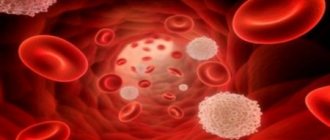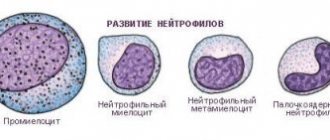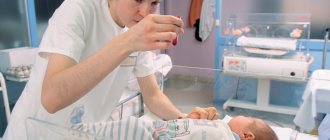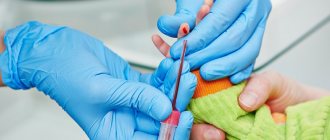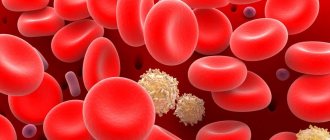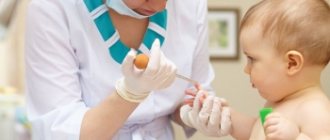- September 10, 2019
- Child's health
- Karina Perevalova
A general (or clinical) blood test is the most frequently prescribed laboratory test, during which it is possible to determine whether any pathological process is occurring in the body of a child or an adult. In addition, it can be used to control the course of chronic ailments.
Clinical examination of liquid connective tissue is both a nonspecific and universal test. This is due to the fact that its results can be correctly interpreted only taking into account the patient’s symptoms.
Both infants and older children are faced with the need to regularly submit biological material for research. Below we describe how to correctly take a general blood test for a child, and what nuances need to be taken into account when preparing for the test. In addition, information is provided on how to correctly interpret the study results.
Indications
A clinical blood test is the most common type of laboratory diagnosis, based on the results of which conclusions can be drawn about the general condition of a person. In pediatrics, this test is especially important, because parents cannot always determine what really hurts their children.
Examination of just a few milliliters of liquid connective tissue can confirm or exclude the presence of a pathological process in the child’s body. Repeated analysis allows you to assess the degree of effectiveness of the treatment carried out earlier.
There are many conditions for which a clinical blood test is suspected to be particularly valuable. These include:
- Infectious pathologies of an inflammatory nature. They can have different etiologies (bacterial, viral, fungal) and localization. Most often, a general blood test is performed in children if they have symptoms of respiratory, skin and intestinal diseases, in particular helminthiasis.
- Inflammatory pathologies of non-infectious etiology. These include allergic and autoimmune diseases.
- Anemia.
- Blood loss resulting from injury.
- Impaired coagulation of liquid connective tissue.
- Pathologies of a malignant nature, which can be either congenital or acquired.
In addition, a general blood test is prescribed to assess the effectiveness of the treatment and before admission to educational institutions (kindergartens, schools).
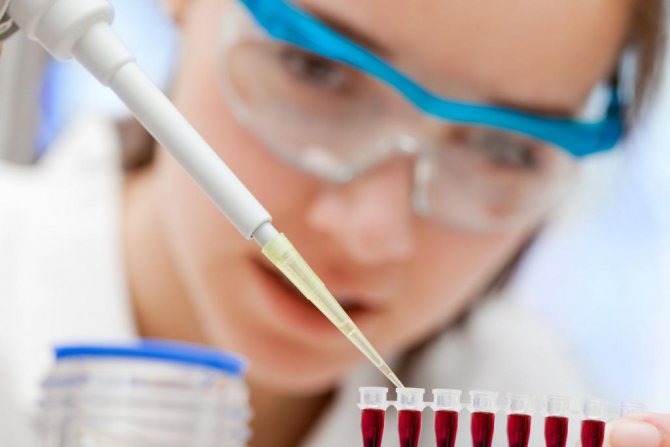
Contraindications
If your child visits a massage therapist, it is necessary to complete the course or reschedule the date of collection of biological material. In addition, it is unacceptable to donate blood immediately after an X-ray examination, ultrasound or any physiotherapeutic procedures.
There are no absolute contraindications to the analysis. However, if a child suffers from certain diseases, in particular blood clotting disorders, low blood pressure, difficulties may arise during the collection of biomaterial. The nurse must be warned about this in advance.
Preparation rules
This stage is very important. Parents should be responsible for preparing for the study. If you do not take into account some nuances before collecting biomaterial, the interpretation of a general blood test in children may subsequently be carried out incorrectly. It is important to understand that liquid connective tissue reacts very sensitively to any changes.
Basic rules of preparation:
- Stop taking medications 14 days in advance. For example, if the child was treated for a completely different reason. If canceling the appointment is impossible, you must inform the doctor about this. The doctor will take this information into account when interpreting the results of the child’s general blood test.
- The day before and on the day of delivery of the biomaterial, it is necessary to avoid physical activity. It is recommended to take your baby for a walk before bedtime, and then put him to bed. For older children, you can read a book the day before, get a massage, or play calm games.
- If the blood sugar concentration is important to the doctor, you should not brush your child’s teeth in the morning. Older children should be prohibited from using chewing gum.
- After waking up, it is recommended to drink a glass of clean water without carbon. Information regarding whether to take a general blood test for a child on an empty stomach or not is presented below.
Rules for preparing for a blood test
Based on this, experts recommend eating easily digestible foods for the last meal the day before the blood test. You are allowed to eat white meat, cereals, vegetables, and fruits in small quantities. It is forbidden to eat fatty, highly salted, fried, spicy and heavily seasoned foods. In addition to the condition regarding whether you can eat before donating blood, there are a number of rules that must be followed to obtain an accurate diagnosis.
A list of important conditions that must be observed before donating blood material from a finger prick:
- Blood collection is carried out only in the morning, except in cases of emergency.
- Blood mass is donated on an empty stomach due to the above reasons.
- As a mandatory preparation for a finger prick blood test, you usually need to stop taking your medications.
- Alcohol does not have the best effect on the composition of the bloodstream. And drinking alcoholic beverages for several days before a blood test provokes a whole complex of biochemical reactions in the bloodstream that interfere with correct diagnosis.
- Any physiotherapeutic procedures, be it ultrasound, fluorography, x-rays, MRI and others, affect the state of blood flow and therefore cannot be combined with the time of taking a blood test from a finger.
- Severe overheating in baths and saunas can provoke incorrect readings of the blood flow for hormones and other formed blood particles.
- If the patient adheres to any diet, especially protein, he should inform the doctor.
The influence of physical and emotional stress on the structure of the bloodstream has long been studied and proven. During intensive sports or performing work associated with heavy physical labor, an increase in the number of leukocytes, red blood cells and hemoglobin is observed, which can be interpreted as the development of some pathological process. Stressful conditions contribute to an increase in platelets and affect the production of insulin and some other microelements. To prevent such factors from distorting the results of a finger prick blood test, they should be excluded.
Features of infant nutrition before biomaterial collection
Many parents are concerned about the question of whether to take a general blood test for their child on an empty stomach or not. Doctors say that at the time the biomaterial is taken, the baby’s stomach should be empty.
As a rule, laboratories are open from early morning until 10-11 o’clock. In fact, this gap is quite enough to plan a visit to a medical facility.
As a rule, immediately after waking up, infants feel hungry. If a child wants to eat, there is no need to deny him this and quickly take him to the laboratory. In this case, the baby will experience enormous stress, and the doctor may receive unreliable test results.
If a child is under 1 year old, it is useless to explain to him why he was not fed before a procedure that was scary for him. Breakfast for infants is required. Porridge, milk, lean meat, vegetables - any dish from his usual diet can be offered to the baby. Then you need to take a three-hour break.
Doctors recommend that parents adhere to the following algorithm:
- Wake up your baby early.
- Feed him. Before a general blood test, the child can eat any food that is familiar to him.
- Go for a walk with your child or play at home.
- After 3 hours, go to the laboratory and submit the biomaterial for research.
Thus, before a general blood test, the child can eat. But after finishing the meal, you must wait 3 hours and only then go to the laboratory.
You can drink clean water in moderate portions. All liquids containing sugar, dyes and preservatives are prohibited. It is unacceptable to drink tea, fruit drinks, compotes and decoctions.
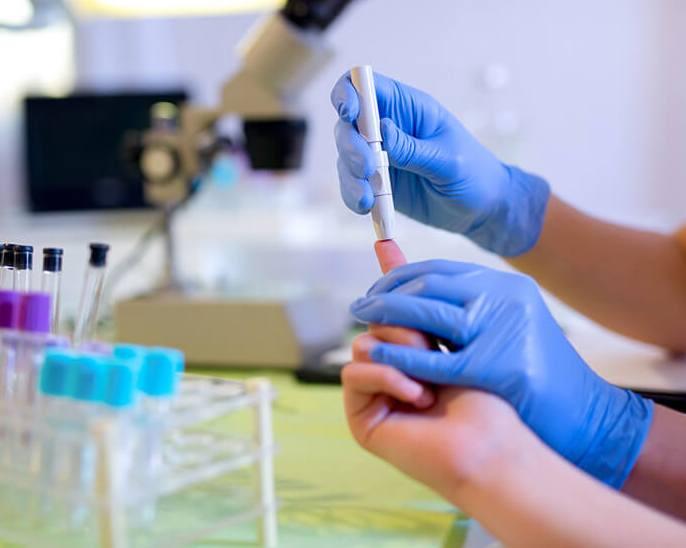
Can a child eat before donating blood?
In order for the result of a child’s routine blood test to be accurate, you must adhere to certain rules: donate blood in the morning (7–11 am) and on an empty stomach. Most experts believe that eating even a small amount of food leads to an increase in the number of white blood cells, which makes diagnosis difficult. Other doctors believe that there is no reason to torture the baby with prolonged fasting; they recommend abstaining from food and drink 3 hours before the procedure.
The question of whether children can eat before a blood test or not is decided individually depending on the age and health status of the baby. The general rules are:
- It is difficult for babies under one year to withstand long breaks between feedings, so it is recommended to donate blood in between. For example, a mother feeds her baby at 6 and 10 am. The best time to submit biomaterial for analysis is about 8 hours. Blood is taken from newborns at any time.
- For children older than one year, the sampling is carried out strictly on an empty stomach. An exception is made for children who suffer from pancreatitis and diabetes. Such children are allowed to eat a small portion of porridge with water or crackers with tea 2–3 hours before the test. The rest of the children are not even allowed to drink water. If your baby is thirsty, you can rinse your mouth with water, but do not swallow. Immediately after the procedure, the child should be fed well.
- The day before the procedure, you should not tire your baby out with physical exercise or feed him sweet, starchy, spicy or salty foods. A calm atmosphere in the home and the psychological preparation of the baby are important. You should not deceive the baby by saying that it will not hurt. It should be said that you need to be patient, because what the doctor does in the medical office is important for the health of the baby.
Nutritional features of children over 1 year old
In this case, the child will have to undergo a general blood test on an empty stomach. This rule is unbreakable. It applies to children over 1 year of age and adults. The fact is that the doctor needs to obtain indicators that reflect the actual functioning of the internal organs.
Eating any food before collecting biomaterial will affect the results of the analysis. Due to this, the doctor may interpret them incorrectly. The worst thing is that, due to parental negligence, the doctor may make an incorrect diagnosis and prescribe an inappropriate treatment regimen.
For example, a child had breakfast in the morning and went to the laboratory. About an hour later he donated blood. At this time, food components have already entered the liquid connective tissue and provoked changes in its composition. They affected blood viscosity, the ratio of proteins, fats and carbohydrates, and the leukocyte formula. After the study is completed, the conclusion form will be sent to the attending physician. The doctor will see certain signs and conclude that an inflammatory process is occurring in the child’s body. Then the doctor will prescribe treatment. Therapy can pose a danger not only to health, but also to life. That is why it is extremely important for parents to know how to properly take a general blood test for a child and follow all established preparation rules.
Is it possible for nursing mothers to donate blood?
Recently, there has been a significant increase in questions from nursing mothers about whether it is possible to donate blood during lactation?
First of all, it is worth taking into account the fact that in the Russian Federation, lactation and the three-month period after its end are an official contraindication for blood donation. [1]
However, if we look at world practice on this issue, it is noteworthy that different leading medical organizations establish different criteria and conditions for the possibility of blood donation by a breastfeeding mother.
So, is it acceptable for a breastfeeding woman to donate blood?
It depends on the circumstances. For example, becoming a blood donor in the early postpartum period is definitely not the best idea. The American Red Cross says a lactating woman can donate blood if she chooses, but breastfeeding moms should wait at least 6 weeks after an uncomplicated full-term birth or cesarean section. If a woman received a blood transfusion during childbirth, then she should wait about 12 months before becoming a donor herself. [2]
La Leche League International sources also differ in their opinions on whether a nursing mother can become a blood donor. So, Dr. Gregory White does not recommend this, Dr. Jack Newman, on the contrary, says that during lactation a woman can donate blood if she does not suffer from anemia, and the Canadian Blood Service does not allow nursing mothers to donate blood in the first 6 months after birth. [3]
What recommendations can be given to a nursing mother if she decides to donate blood?
First, during lactation, special attention must be paid to avoid dehydration after blood collection. Breast milk consists of 87% water, and blood donation involves the immediate loss of 450 ml of blood - this is a large amount of fluid that the body must replenish, so the mother needs to drink enough water.
Secondly, a nursing woman should eat especially well before and after blood donation.
Third, donors are usually advised to avoid lifting heavy objects with the same hand used to draw blood (to avoid the formation of a large hematoma). This can be difficult for mothers who cannot always avoid lifting and carrying their babies and older children in their arms. [4]
Thus, when deciding on the possibility of blood donation by a nursing mother, we see that in world practice this issue is most often resolved positively, but is associated with certain restrictions and difficulties for the nursing mother herself. In any case, a breastfeeding woman should always disclose her current status when having blood drawn and consult her healthcare provider before making a decision.
Call a consultant Do you have any questions? +7 (812) 956-3-954
Literature:
- List of contraindications to donation of blood and its components (Order of the Ministry of Health of the Russian Federation dated September 14, 2001 N 364 “On approval of the procedure for medical examination of a blood donor and its components” and Order of the Ministry of Health and Social Development of the Russian Federation N 175n dated April 16, 2008 “On making changes to Order of the Ministry of Health of the Russian Federation dated September 14, 2001 N 364"
- Breastfeeding and Human Lactation (Jones and Bartlett Series in Breastfeeding/Human Lactation) by Jan Riordan Publisher: Jones and Bartlett Publishers, 3rd Edition, 2004. Pages: 819
- La Leche League International Donating Blood
- La Leche League International Question from breastfeeding mothers: should lactating women donate blood? New Beginnings 18(4):227, November/December, 2001
Alena Lukyanchuk Psychologist, lactation consultant, member of ILCA (The International Lactation Consultant Association)
Alena Korotkova, clinical psychologist, lactation consultant.
Process of collecting biomaterial
Many mothers and fathers do not know where they get a general blood test from children. Both capillary and venous blood are suitable for the study. These species have different normal values, which must be taken into account when interpreting the results.
Where do they get a general blood test for children? Most often, by default, biomaterial is collected from a finger. But, according to clinical recommendations, if it is impossible to perform this action, the nurse has the right to make a puncture in the vein. It is worth noting that this happens extremely rarely.
Blood sampling for clinical research occurs as follows:
- The nurse wipes the pad of the finger of the non-working hand with cotton wool, generously moistened with an antiseptic. The latter most often is medical alcohol.
- The nurse then very quickly pierces the skin with a lancet or scarifier. Then she puts a little pressure on the pad of her finger so that a few drops of blood come out. This liquid connective tissue is removed with cotton wool soaked in an antiseptic.
- The nurse then collects the escaping blood and transfers it to a tube. Then cotton wool moistened with an antiseptic is applied to the puncture site. It needs to be held on the pad for several minutes. This is necessary in order to stop the bleeding.
The process of collecting biomaterial lasts on average 1 minute. It is necessary to explain to the child that it is not associated with the occurrence of severe painful sensations, but some discomfort may still occur.
Information on how to take a general blood test for a child can be provided by the doctor who ordered the test. He will subsequently be involved in the interpretation of the results.
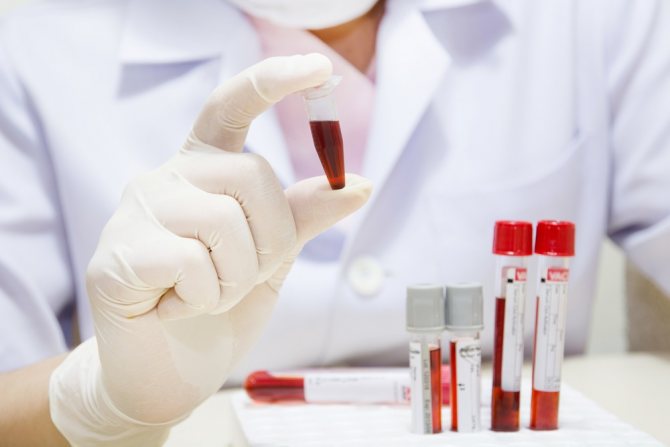
Normal indicators
During the diagnosis, the laboratory technician takes into account the total volume of blood, counts the number of formed elements, and also evaluates their relationship with plasma and with each other. That is why decoding the result is difficult for people without medical education. Doctors do not recommend considering your own conclusions to be 100% correct and independently prescribing treatment for your child. This can lead to irreparable consequences.
The age of the child must be taken into account. The fact is that as children grow older, the norms for the results of a general blood test in children also change. Information about what indicators are normal for each age is presented in the table below.
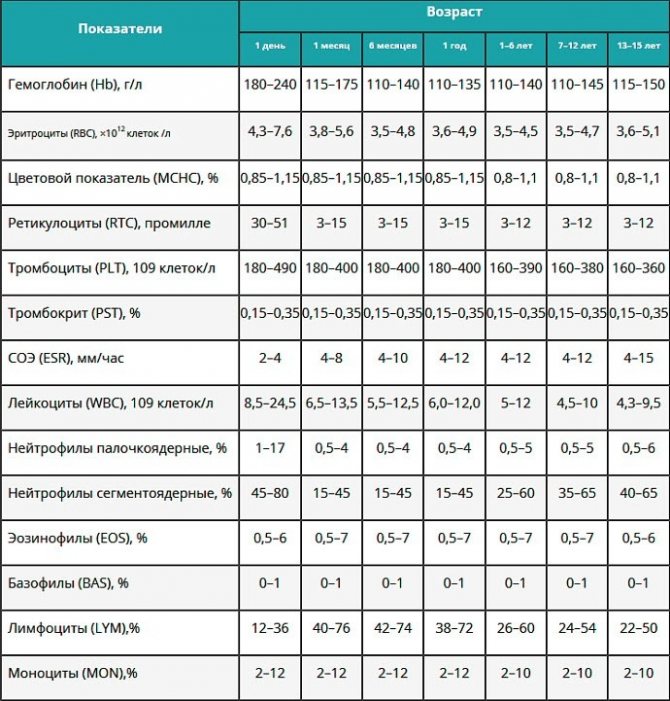
If the child is completely healthy, all of these indicators will be within normal limits. If a pathological process occurs in his body, they will be deviated in one direction or another. It does not happen that only one indicator decreases or increases. That is why a comprehensive assessment of laboratory diagnostic results is important. Only a doctor can do this correctly.
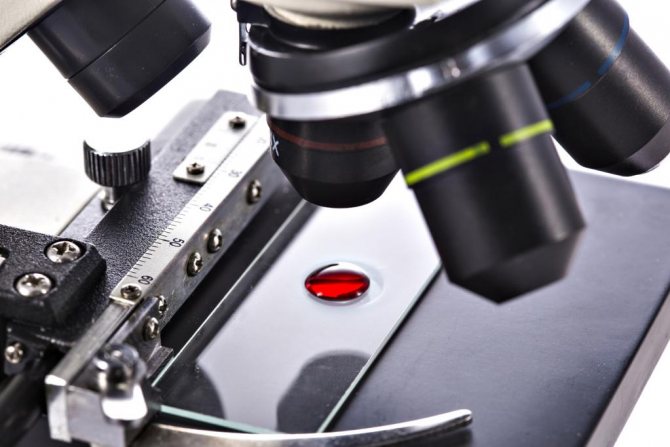
Where to get a general blood test for a child, cost
A clinical study of liquid connective tissue is an analysis for which biological material can be submitted in any laboratory. Moreover, the results will be ready almost immediately.
You may want to contact your primary care physician first. He will issue the directions. In addition, he will tell you how to properly take a general blood test for a child. After this, you need to go to the treatment room and sign up for biomaterial collection. On the appointed day and time you need to come and donate blood for analysis.
In this case, the research will be free. You just need to present your medical insurance policy to the registrar.
You can take a general blood test for your child for a fee. In this case, you must choose any medical institution and come to the treatment room during its opening hours. Moreover, you don't even need a referral. This option is more attractive because it saves a lot of time. Moreover, the cost of the study is on average only 350 rubles.
Features of blood sampling for general analysis in infants
As in other cases, to perform a clinical analysis, capillary blood will be taken from the baby from a finger.
The rule “not to eat before donating blood” does not apply to babies in their first year of life!
Children under 1 year of age are not required (and most often impossible) to go without food:
- Newborns will have to undergo blood tests more than once in the first week of life. There is no question of abstaining from feeding the baby.
- It is impossible to explain to babies under one year old why they were not fed before the painful procedure. Breakfast is a must for them - milk, porridge, vegetables, lean meat, depending on what the baby is accustomed to eating. Then there is a break of 3 hours, and you can go to the laboratory. The algorithm is this: wake him up early, feed him, go for a walk and wait the right time, go and donate blood.
- Psychological preparation before taking the exam is important. In the evening, the baby is offered a quiet game or shown a cartoon with a doctor character. In the morning they tell him where they are going and why. Be sure to buy a children's scarifier for drawing blood.

